Mastering Recipe Creation: A Guide to Culinary Excellence
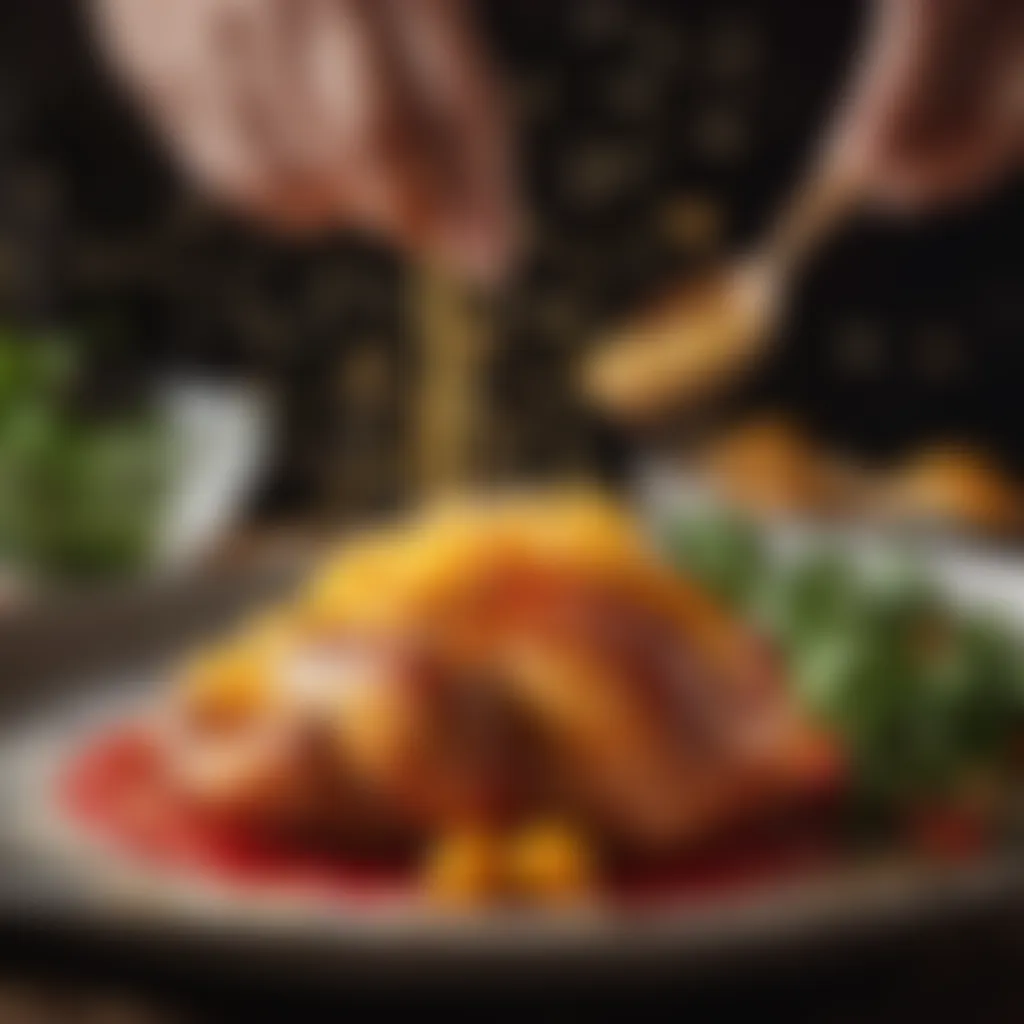
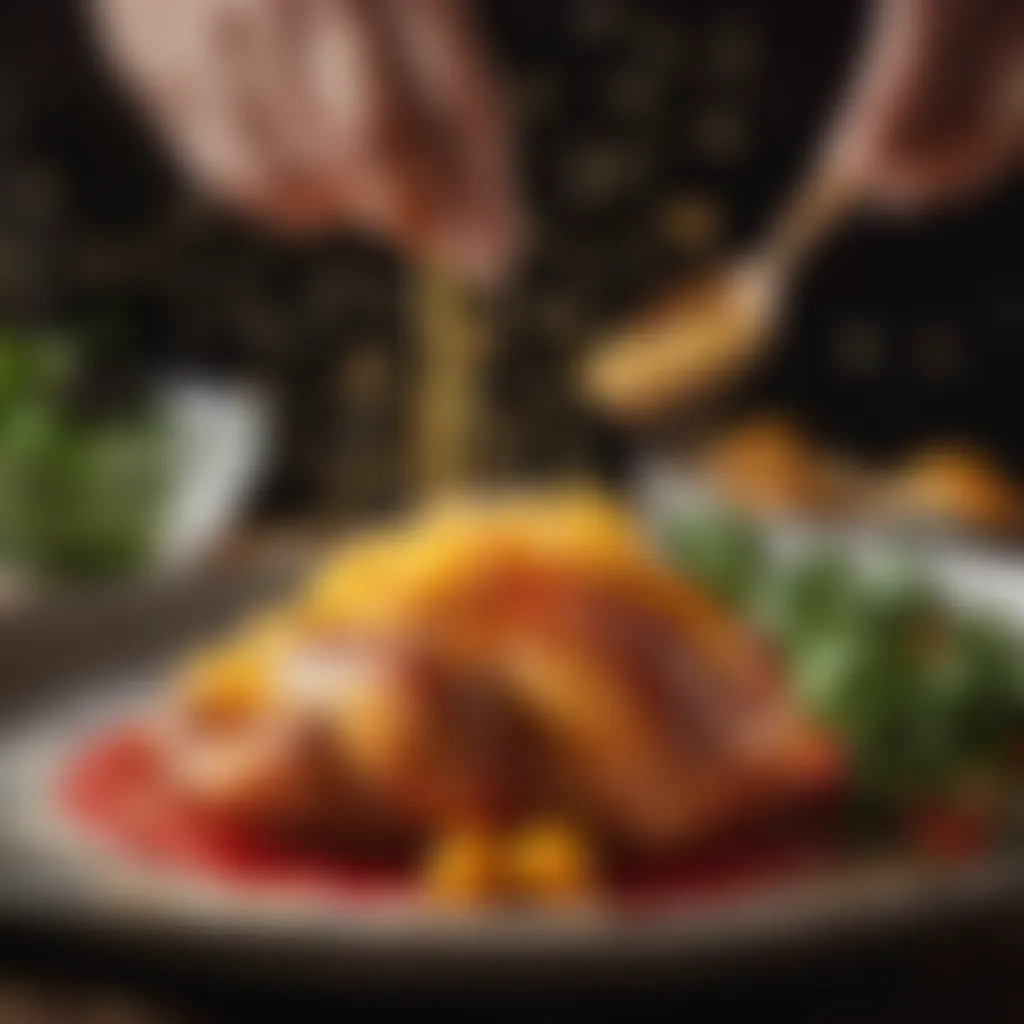
Intro
In the realm of cooking, recipe creation stands as a unique blend of art and science. It’s a dance between the imagination and the technique, where each ingredient plays its part in a culinary symphony. For both novice cooks and seasoned chefs, understanding the nuances of crafting dishes can elevate everyday meals into extraordinary experiences.
Every dish tells a story, and mastering this art begins with a solid foundation—knowing your ingredients. This guide will provide an in-depth exploration of not only how to combine flavors but also how to present them in a way that delights the eye as well as the palate. Prepare to embark on a journey that transforms everyday cooking into a canvas for creativity and innovation.
Understanding the Fundamentals of Recipe Creation
Understanding the basics of recipe creation is like laying the groundwork of a sturdy house. It's essential to know the underlying principles before diving headfirst into culinary experiments. A well-thought-out recipe not only brings satisfaction to the cook but also elevates the dining experience for everyone involved. By mastering these fundamentals, you empower yourself to create dishes that resonate with flavor, technique, and artistry.
The Importance of Ingredients
Quality over Quantity
Quality is a more robust conversation than quantity when creating recipes. The premise here is simple: it's better to use fewer high-quality ingredients than a plethora of mediocre ones. A ripe tomato bursting with flavor will do wonders for a sauce compared to one that's just hanging around in the fridge. Fresh produce or ethically sourced meats can dramatically change the end product. Additionally, cooking is a sensory experience, and the quality of your ingredients directly influences the aroma and taste of your dish.
Choosing quality ingredients often leads to healthier meals, as they contain fewer additives or preservatives. Moreover, they are usually more flavorful, giving dishes that extra oomph. The disadvantage may be the cost; top-notch ingredients can be pricey. But, focusing on quality often means you use less, thus balancing out the expense.
Seasonal and Local Sourcing
There's something magical about cooking with seasonal ingredients. Not only does seasonal food tend to be fresher and fuller of taste, but it also supports local farmers. When you source ingredients from your region’s bounty, you're making a choice that benefits your community.
Seasonal and local sourcing can drive creativity. Ingredients vary with the seasons, prompting you to adapt and evolve your recipes. This ensures variety in your cooking and often results in dishes that are both captivating and delicious.
The downside can be the inconvenience; not all products are available year-round—especially if you're partial to exotic flavors. However, this can be seen as an invitation to experiment and expand your palate.
Understanding Flavor Profiles
Grasping flavor profiles is like unlocking a secret code to delicious food. It’s about recognizing how different tastes interact and complement each other. Sweet, salty, sour, bitter, and umami—the cornerstone of flavor—play pivotal roles in crafting a well-rounded dish. Knowing how to balance these elements can elevate simple ingredients into culinary masterpieces.
Flavor profiles are not static; they can evolve. Understanding them allows you to tweak your recipes, enhancing what works and minimizing what doesn’t. By experimenting with different combinations, you’ll discover new dimensions to your cooking. The only drawback might be that you need to invest time understanding these concepts thoroughly. However, the fruits of your labor are well worth the effort.
The Role of Techniques
Basic Cooking Methods
Before striving for complicated cooking techniques, mastering the basics is essential. Grilling, frying, steaming, and boiling are foundational, albeit simple methods that form the basis for many dishes. They allow you to learn how different ingredients react to heat and develop your flavor understanding.
Using basic cooking methods can ensure reliability when it comes to outcomes. Often, complexity emerges from simplicity, allowing you to build your confidence in the kitchen. However, the limitation lies in the potential for monotony; if you rely solely on these methods, your meals may fall flat. Learning how to combine techniques opens a world of possibilities.
Sophisticated Techniques
Once the foundations are solid, you can indulge in more sophisticated cooking techniques. Sous-vide, confit, or molecular gastronomy might sound like fancy terms but venturing into these realms can vastly enrich your culinary repertoire. They invite you to experiment and innovate in ways that basic methods often don't.
Sophisticated techniques can give you more control over texture and flavor. However, these methods often require specialized equipment or higher skill levels, which might discourage beginners. Nonetheless, with enough practice, these sophisticated methods can considerably enhance your cooking prowess and improve how you approach recipe creation.
Equipment and Tools
Your culinary equipment can be an unsung hero in the kitchen. High-quality knives, pots, pans, and specialized gadgets not only ease the cooking process but also impact the final outcome of your recipes. Investing in the right tools can lead to better-prepared ingredients and, ultimately, better meals.
While having the right equipment can make tasks simpler and more efficient, the costs can add up quickly. It's often tempting to over-purchase, thinking you'll use everything, but a minimalist approach can sometimes better serve your culinary journey. Ultimately, the best tool is your desire to explore and create.
Exploring Flavor Profiles
Understanding flavor profiles is critical for anyone looking to elevate their culinary prowess. When you dive into the world of flavors, you unlock a door to creativity in cooking that allows you to transform a simple dish into an unforgettable experience. Exploring flavor profiles equips you with the knowledge to balance, layer, and ultimately craft dishes that don’t just satisfy hunger but also entice the senses.
Balancing Flavors
Sweet, Sour, Salty, Bitter, Umami
The five basic tastes—sweet, sour, salty, bitter, and umami—are fundamental to creating balanced dishes. Each taste has its own distinctive character and role in the overall flavor profile. For instance, sweet flavors, like honey or maple syrup, can add warmth and comfort, while sour notes, such as vinegar or citrus, bring a bright, refreshing quality. Salty elements, like soy sauce or salt itself, enhance other flavors, making them pop. Bitter can add depth and complexity, often found in greens like arugula or in dark chocolate. Lastly, umami, the savory taste, is often associated with ingredients like mushrooms or aged cheeses, rounding out the taste spectrum by adding richness.
This balance is absolutely essential. If a dish leans too heavily towards sweet, it can feel cloying; too much salt, and it becomes overwhelming. Thus, understanding how these flavors work together allows for harmonious dishes that are not only delicious but deeply satisfying.
The Science of Taste
The science behind taste delves into how our taste buds interact with flavors. Each taste bud on our tongue is sensitive to different flavor molecules. When you understand this interaction, you master a pivotal part of recipe creation. Interestingly, our perception of taste is also influenced by smell. A dish that smells wonderful usually tastes better than one that doesn’t, regardless of the actual ingredients used.
For culinary creators, this knowledge is beneficial as it allows one to think beyond mere taste and into the realm of aroma. The unique feature of using aroma can enhance a dish in surprising ways, often elevating it to an art form, but getting the balance right is imperative, as overwhelming aromas might confuse the palate.
Using Flavor Enhancers
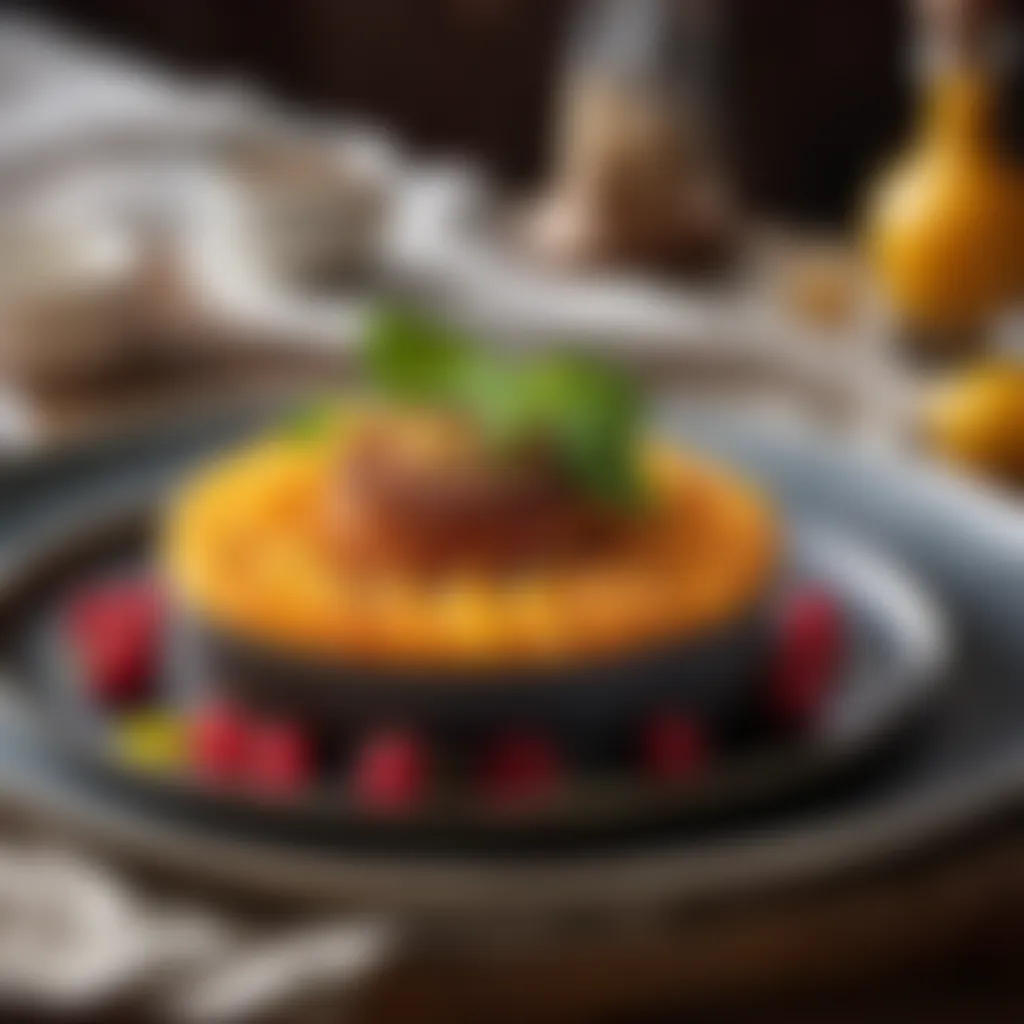

Flavor enhancers like citrus zest, herbs, or even high-quality broth can elevate your cooking. They work by amplifying the intrinsic flavors of the dish without overshadowing the main ingredients. Lemons can brighten up a heavy stew, and a sprinkle of freshly chopped herbs at the end can uplift and add freshness.
These enhancers are beneficial as they provide a way to maximize flavor without needing to add more fat or salt, making them popular among health-conscious cooks. However, caution is key; overusing enhancers can dull the natural flavors if not carefully integrated.
Layering Flavors
Building Complexity
Building complexity in a dish is about creating layers of taste that reveal themselves bite after bite. This can be achieved through techniques such as cooking ingredients at different temperatures or using various methods like roasting, grilling, or braising. When flavors are built in a thoughtful way, they create an experience rather than just a meal.
This knowledge is vital for anyone desiring to master recipe creation, as it encourages experimentation. However, care must be taken to ensure that these complexities don't become muddled. Ensuring clarity amidst complexity is the key to producing enjoyable dishes.
Pairing Ingredients
The art of pairing ingredients relies on an understanding of how different flavors complement each other. For instance, tomatoes usually pair well with basil, while chocolate creates magic with sea salt. This blend of flavors not only enhances the dish but can also surprise the diner with unexpected delights.
This feature is beneficial as it can lead to innovative combinations that stand out in one's cooking repertoire. The challenge lies in experimenting with pairings, as not every combination will be a hit, but each failure leads you closer to successful dishes.
Creating Depth in Dishes
Creating depth involves layers of flavors and textures that make a dish captivating. Ingredients like sautéed onions or roasted garlic can lay a foundation upon which other flavors build, inviting eaters to explore the dish’s intricacies.
This technique is important because it transforms a basic recipe into something truly special, captivating the diner’s senses. The downside is that achieving this depth requires time and attention to technique, which can be a barrier for some home cooks. Nevertheless, the results are often worth the effort.
"Great recipes don't just happen; they evolve through understanding flavors and dedication to craft."
By mastering these aspects of flavor profiles, cooks can elevate their dishes from mundane to extraordinary, channeling their culinary creativity into every bite.
Crafting Innovative Dishes
The world of cooking is a vast landscape of flavors and techniques, where the only boundaries you face are set by your imagination and skills. Crafting innovative dishes becomes the bridge that connects tradition with creativity. This section discuses the various methods through which one can break the mold and create something fresh while respecting culinary heritage. By blending these innovative techniques with familiar tastes and textures, aspiring chefs can delight the palate and elevate their cooking.
Reimagining Traditional Recipes
Understanding Cultural Influences
Every recipe tells a story, often steeped in its cultural roots. When you understand these influences, you open a window to an entire world of flavors. For instance, a simple pasta dish can become a vehicle for celebrating Italian traditions while incorporating spices from Indian cuisine. This adaptation not only presents a delicious result but educates both you and your diners about diverse gastronomies. The key characteristic here is the respect for the original ingredients and methods while exploring alterations that promote a global palate.
Cultural influences are beneficial for broadening one's culinary perspective. It brings diversity to the table, allowing for angular flavors and new textures that might have never been considered. However, this approach can come with its own pitfalls. If not done thoughtfully, it risks overshadowing the essence of the original dish. That being said, blending can truly create gastronomic masterpieces when executed with care.
Modern Twists on Classics
Modern twists on classics have taken the culinary world by storm, as they bring a refreshing spin to well-loved meals. Take the quintessential beef Wellington: a chef might opt to use a smoked mushroom duxelles instead of traditional mushroom, or replace beef with a plant-based alternative. The characteristic of these modern interpretations is their ability to retain the heartiness and familiarity of the classic dish while introducing unexpected flavors.
This method is popular because it invites diners to experience nostalgia through a new lens. It challenges chefs to think creatively and encourages them to push their limits. Yet, the downside lies in the balance; if the new twist deviates too far from the original profile, it can alienate the very audience that cherishes these classics.
Fusion Cuisine
Fusion cuisine stands as a testament to culinary creativity, showcasing the beauty of cultural intersections. By combining techniques or components from various traditions—think sushi tacos or curry spaghetti—you can explore innovative means of expression. The characteristic feature here is the balance of flavors from distinct culinary backgrounds, resulting in unique dishes that surprise and delight the taste buds.
Notably, fusion cuisine is beneficial for attracting diners curious about new combinations. It celebrates diversity and innovation, inviting a broader audience to engage with food. However, the uniqueness may lend itself to confusion; without a clear message, diners might find it hard to identify what they’re actually eating. Ensuring clarity while embracing this boundary-pushing style is key to crafting successful fusion dishes.
Incorporating Seasonal Ingredients
Incorporating seasonal ingredients into your culinary practice is like striking gold; it's a surefire way to achieve freshness and flavor that can elevate any dish. By adapting recipes according to the seasons, you can harness the natural availability of produce and proteins, which often leads to better taste and nutritional quality.
Adapting Recipes to Seasons
Recognizing seasonal changes allows for a creative reevaluation of your menu. You might transform a summer salad rich with cherry tomatoes and cucumbers into a heartier winter dish featuring roasted root vegetables. The key characteristic of adapting recipes is the responsiveness to what is currently at peak ripeness, offering the best in terms of flavor and often cost-effectiveness. This method is beneficial because it encourages you to embrace what nature provides, ensuring that each dish is imbued with freshness and health benefits.
However, it can also pose a challenge: the need for constant adaptation may require lateral thinking, pushing someone out of their comfort zone. Embracing this challenge opens doors to endless culinary options.
Maximizing Freshness and Flavor
Maximizing freshness and flavor when using seasonal ingredients ensures that your dishes retain their vibrant character. Fresh herbs like basil in summer can radically differ in taste from their jarred counterparts. Knowing when to use fresh versus dried ingredients is critical for achieving depth in your cooking. The main characteristic of this approach is simple—connect with local farmers or markets to source the freshest ingredients.
This choice is highly beneficial because fresh produce can provide a more concentrated flavor and an attractive appearance. A dish feels different when crafted from ingredients that were just harvested. On the flip side, sourcing fresh ingredients may sometimes limit availability or increase costs, especially in off-seasons.
Preserving Ingredients for Other Seasons
Being savvy with your flavors means harnessing the seasons by preserving ingredients when they are at their peak. Pickling, drying, or freezing tomatoes or herbs gives you a way to capture seasonal flavors and prolong their shelf life. The unique feature of preservation is that it allows the essence of one season to shine through in another, bridging culinary experiences.
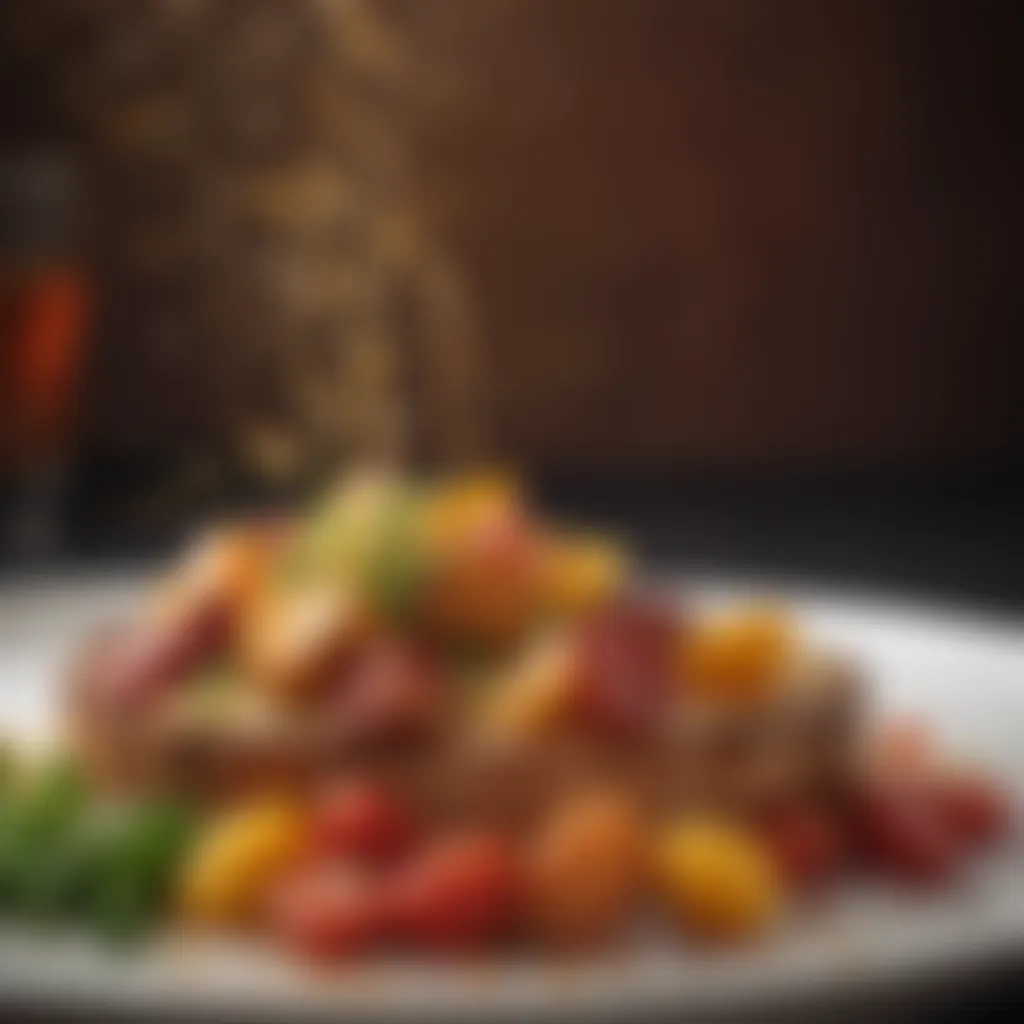

This method is a brilliant choice for savoring your favorite flavors later in the year. It provides versatility, as you can create exciting dishes that celebrate the warmth of summer in the middle of winter. However, it requires some skill to ensure that flavors are preserved without losing quality, thus needing attention to detail and quality control during the process.
"Great cooking is not about perfection; it's about letting each ingredient express its unique voice."
In summary, crafting innovative dishes isn't just about combining elements haphazardly. It's a thoughtful process that honors traditional roots while allowing creativity to flourish. Whether you’re reimagining classic recipes, playing with the vibrancy of seasonal ingredients, or indulging in fusion cuisine, integrating an innovative spirit can foster a culinary adventure worth savoring.
The Art of Presentation
Presentation is not just the icing on the cake; it’s the visual dialogue between the dish and the diner. It serves as the first impression, setting the stage for what’s to come. The approach to presentation is an extension of the culinary experience, transforming a meal from mere sustenance into a visual feast. In this article, understanding the nuances of presentation will empower you to elevate every dish you create. A well-presented meal can enhance flavor perception, create anticipation, and even impact the overall enjoyment of the food itself. Exploring the various elements of plating and garnishing will lead to a more thoughtful approach to how your hard work in the kitchen is shared with others.
Plating Techniques
When it comes to plating techniques, several factors play vital roles. Two key components are color and texture, the effective use of space, and the creation of height and balance. Each of these elements contributes uniquely to the overall aesthetic and experience of a dish.
Considering Color and Texture
The color and texture of a dish can make or break its appeal. An array of colors can evoke emotions and draw attention. Think about how a simple white plate can make a vibrant salad burst with life. The contrasting colors create a visual symphony, catching the eye and stirring the appetite. Texture, on the other hand, adds another layer of complexity; the crunchiness of toasted nuts against soft greens is a sensory delight that invites diners to dig in. This interplay of color and texture not only pleases the eye but also holds the potential to influence one’s perception of flavor, making it a beneficial strategy in this art.
- Key Characteristic: The vividness you achieve through thoughtful selection of ingredients.
- Unique Feature: A thoughtfully arranged plate can tell a story, enhancing the dining experience.
- Advantages: Increases the dish's attractiveness, making for great plating can turn an ordinary meal into something that feels extraordinary.
Using Space Effectively
Space in plating is akin to breathing space in a room; overcrowding can suffocate the main attraction. Utilizing space effectively allows each component of a dish to shine. Negative space is not just empty; it frames the food and gives it room to be appreciated. For instance, a single slice of seared salmon resting against a bed of vibrant pea puree can create a striking visual contrast that draws the eye while allowing the palate to anticipate the flavors.
- Key Characteristic: Balance achieved by leaving areas of the plate untouched.
- Unique Feature: Correct spacing allows diners to focus on individual elements without feeling overwhelmed.
- Advantages: Helps maintain interest and prompts curiosity, guiding the diner through the meal without overwhelming them.
Creating Height and Balance
Creating height in a dish gives an immediate impression of elegance. A towering stack of layered ingredients can entice curiosity and spark the imagination. A well-structured plate with a good height provides a sense of balance that looks appealing while also showcasing culinary skill. Imagine a dessert that features a delicate cake topped with a luscious scoop of cream—a sight that promises something delightful. However, it’s essential to balance the elements. Too much height without stability can lead to a dish that collapses, so grounding elements like sauces or purees can anchor your creation.
- Key Characteristic: It adds an architectural element that visually captivates.
- Unique Feature: The ability to manipulate visual perspective with a few strategic layers can elevate expectations.
- Advantages: A striking presentation can create memorable dining moments, encouraging them to return for more.
Enhancing with Garnishes
Garnish should never be an afterthought; it’s an opportunity to elevate the dining experience further. Choosing appropriate garnishes that pair with your dish enhances both flavor and aesthetic.
Choosing Appropriate Garnishes
Garnishes, when chosen wisely, can accentuate the flavors and colors of your dish. A sprinkle of fresh herbs can enliven a dish with a burst of freshness, while perhaps a drizzle of balsamic reduction adds a touch of elegance. The secret is selecting garnishes that complement—not overwhelm. Someone may argue that a wrong garnish might ruin the experience, so precision is key in this choice.
- Key Characteristic: Complements the main dish while adding something unique.
- Unique Feature: Thoughtful garnishing can enhance flavor profiles significantly.
- Advantages: Improves the visual appeal and enhances the overall gastronomic experience.
Using Edible Flowers and Herbs
Edible flowers and herbs are a whimsical addition that can transform a dish into a work of art. Flowers such as nasturtiums or pansies not only add color but also burst with flavors that intrigue the palate. This unusual approach can make your presentation stand out, making it a fun and popular choice for many cooks. However, care must be taken to ensure they are sourced from reputable places to avoid pesticides and other chemicals.
- Key Characteristic: Adds an unexpected note in both tastes and looks.
- Unique Feature: They can evoke feelings of nature and freshness in a unique way.
- Advantages: Provides a unique visual touch, allowing creativity to flourish and signaling a thoughtful presentation.
Creating Visual Appeal
Creating visual appeal involves considering not just colors and textures but also the overall harmony of the plate. Every element should entice the eye while still hinting at the flavors that await. This consideration plays an essential role in drawing people in and making moments around the dining table memorable.
- Key Characteristic: The ability to create immediate attraction that resonates with diners’ appetites.
- Unique Feature: The simultaneous consideration of several aspects can help you to create a stunning visual composition.
- Advantages: Effective visual appeal encourages not only enjoyment of the meal but also the experience of dining itself.
"A plate is the canvas, and each dish is a work of art waiting to be unveiled."
Mastering these elements not only enhances your dishes visually but also nurtures a deeper appreciation for your culinary creations. With practice, these techniques become second nature, allowing you to unleash creativity in the kitchen. Each meal goes from being simply a dish to an artistic statement, elevating the satisfaction shared around the table.
The Process of Recipe Testing
Recipe testing is the bedrock of creating standout dishes that not only tantalize the taste buds but also keep home cooks coming back for more. Engaging in recipe testing allows one to refine their culinary skills while contributing to a more consistent outcome. When embarking on the culinary journey, this iterative process acts like a compass, guiding one through various techniques and flavor adjustments to ultimately achieve a dish that embodies perfection.
Testing recipes takes the guesswork out of the equation. It encourages a deeper connection to the ingredients and techniques involved, fostering creativity and adaptability. In a world where culinary trends shift faster than you can say "sauté," honing the ability to test and perfect recipes becomes an invaluable skill. It’s not just about following instructions; it’s about discovering flavors and marrying techniques.
Iterative Testing Strategies
Gathering Feedback
A crucial part of the testing process is gathering feedback. Inviting others to taste your creations can provide insights that might have slipped under your radar. Taste testers can be family members, friends, or coworkers—essentially anyone willing to offer their perspective.
The standout feature of gathering feedback is that it opens a window to the preferences of different palates. Every individual has a unique taste profile; understanding this can elevate your dish. This process sheds light on any necessary adjustments that might be needed and shines a spotlight on the things that work beautifully as is.
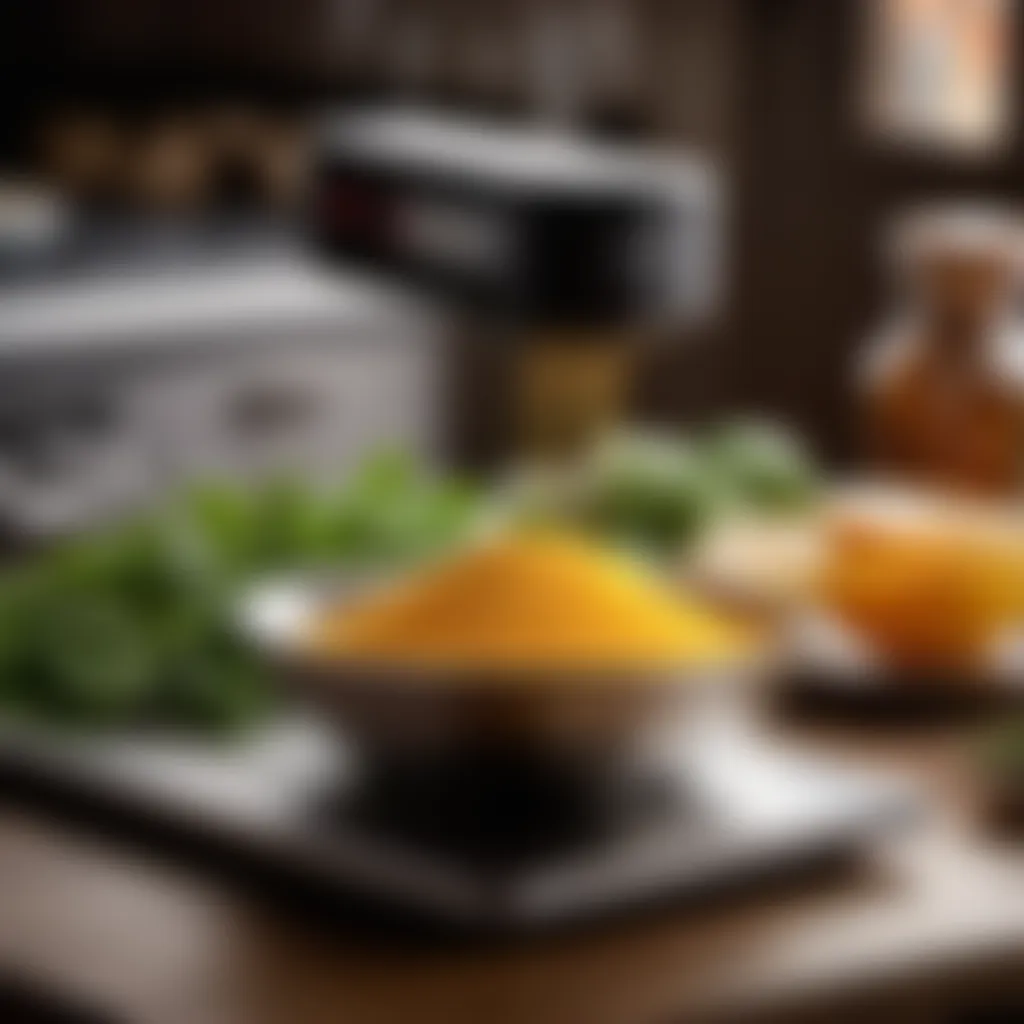
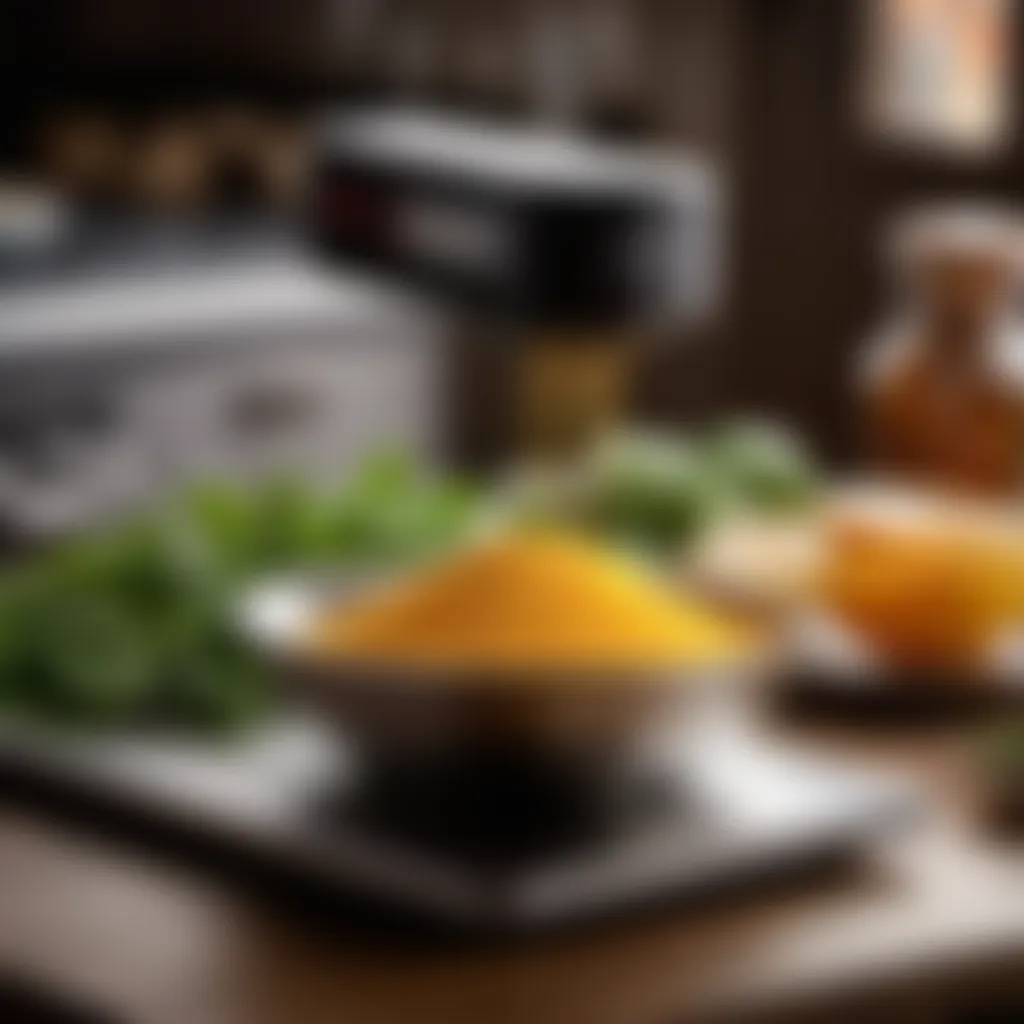
However, it’s essential to approach feedback with an open mind. Not every critique will resonate with your vision, and there's a fine line between integrating others’ ideas and staying true to your culinary voice. That said, this aspect of recipe testing ultimately fosters a greater sense of community among home cooks.
Refining Techniques
Refining techniques is a vital component in the recipe testing journey. As you repeat cooking a dish, you begin to identify specific methods that yield better results. It might be the way you chop vegetables or the temperature at which you sauté garlic. Small, incremental improvements can lead to significant enhancements in your final product.
One of the unique traits of refining techniques is its transformative power. Over time, these refinements accumulate, leading to more complex and sophisticated dishes. It’s this evolution that keeps the cooking experience engaging and fulfilling, allowing for growth in confidence and ability.
On the downside, excessive focus on technique might stifle creativity if one becomes too rigid or perfectionistic. Thus, balance must be maintained between skill refinement and spontaneous experimentation, enriching the overall culinary experience.
Adjusting Flavor Profiles
Adjusting flavor profiles can make or break a dish. When ingredients are combined, their natural flavors meld together, sometimes leading to unexpected outcomes. It’s during the testing phase that subtle tweaks become paramount for elevating a dish from ordinary to exceptional.
This practice emphasizes learning how to balance different flavor elements. The ability to discern the right amount of salt, acidity, or sweetness is key to crafting a harmonious taste experience. By adjusting these profiles, one can create a dish that achieves a balance where no single flavor overshadows another.
However, it’s important to proceed with caution. Constantly modifying flavors without understanding the underlying principles can lead to a chaotic dish. A thoughtful approach, therefore, includes tasting as you go and being aware of how small changes can have substantial impacts.
Maintaining Consistency
Standardized Measurements
Standardized measurements are a cornerstone of recipe testing. These ensure that every ingredient is used in the right proportions, which is essential for consistency. When a recipe is repeated, following the same measurements allows for reliable outcomes—an absolute necessity in the realm of home cooking.
The beauty of sticking to standardized measurements is that it simplifies the cooking process, backing up your creative flair with reliable results. This helps in building confidence, especially for cooks who are still finding their footing in the kitchen.
On the flip side, being overly rigid with measurements can stifle creativity. While a dash of salt can vary from cook to cook, a fixation on precision might hinder spontaneity in flavor balancing.
Documenting Recipes
Documenting recipes is a crucial practice that often gets overlooked. Keeping detailed records of what worked and what didn’t can save time and prevent a redundancy of trial and error. It creates a repository of knowledge that evolves with every dish created.
Furthermore, the act of documenting encourages reflection. By noting the changes made during each test, you can trace your progress as a cook and creative thinker. This unique feature can also facilitate sharing experiences with others, enriching the cooking community.
However, the drawback is that the process of documentation can become tedious if not approached with a light touch. Advocating for notes without losing passion for the cooking process is a fine balancing act.
Scaling Up or Down
Scaling up or down is another pivotal aspect of recipe testing. Adjusting recipes to serve more people or simply downsizing for an intimate meal requires an understanding of structure and flavor consistency. This adaptability ensures that dishes can be enjoyed regardless of the occasion.
This flexibility demonstrates a key characteristic of great home cooks—they are able to transition between large gatherings and smaller dinner parties effortlessly. It allows for creativity in presentation and serving without compromising taste.
Yet, there is a risk. Not every recipe scales seamlessly, and careful attention must be paid to ingredient ratios and cooking times. Taking the wrong approach could lead to undersized flavor profiles or altered textures. Thus, a thorough understanding of your recipe is essential before altering the quantities.
Final Thoughts on Recipe Creation
In the realm of culinary arts, recipe creation stands as both an art and a science. It is a reflection of one’s personal journey through tastes, techniques, and cultural influences. Embracing the multifaceted nature of this practice not only enhances one’s cooking skills, but also paves the way for a unique culinary expression. As we conclude this guide, it's vital to recognize several key components that underscore the importance of recipe creation in our kitchens.
The kitchen is not merely a place for cooking; it’s a canvas for personal expression.
The Importance of Personal Style
Finding Your Culinary Voice
Finding your culinary voice is akin to an artist discovering their own style. It relates to showcasing personal tastes and preferences through recipes that speak to one’s experiences. This unique characteristic resonates deeply with others, allowing for the establishment of a signature style that sets a cook apart from the crowd. It encourages creativity, enables cooks to modify traditional dishes into something new and personal, fostering an emotional connection with the food they create. A distinct voice also aligns with the notion that flavors can narrate stories about culture, geography, or personal memories. For anyone serious about cooking, this voice is a key asset.
Experimentation as a Path to Mastery
Experimentation is another cornerstone of growth in the kitchen. Trying out new techniques or unexpected ingredient pairings can yield surprising results. This hands-on method of exploration contributes to a cook’s confidence and skill set. The willingness to step outside one’s culinary comfort zone can lead to culinary revelations. The key characteristic of experimentation lies in its potential for growth, but it also requires a balanced approach; sometimes, not every experiment will thrive, and that's perfectly fine. It’s about learning from such experiences, thus honing one's craft. By embracing this practice, cooks cultivate resilience and ingenuity.
Staying Current with Trends
Keeping abreast of culinary trends benefits cooks by broadening their culinary repertoire. Whether it's a resurgence of ancient grains or a newfound love for plant-based dishes, being aware of what's popular can offer inspiration for recipe creation. However, merely following trends may risk overshadowing personal style. The key here is to integrate what's current while keeping one's culinary identity intact. Adapting trends into personal practice enhances creativity and can invigorate dishes while also connecting with a larger food community. Being current means tapping into what's fresh and exciting, thus revitalizing one’s own cooking practice.
Embracing Continuous Learning
Engaging with Culinary Communities
The value of engagement with culinary communities cannot be overstated. Sharing experiences with others who are passionate about cooking creates a support network that fosters growth and innovation. Participation in forums or local cooking clubs makes it easier to exchange ideas, gather feedback, and learn from seasoned chefs. These communities provide a unique opportunity for collaboration and inspiration that elevates one’s culinary journey. The key here is mutual support; everyone brings something different to the table, allowing for a richer cooking experience.
Taking Classes and Workshops
Pursuing classes and workshops presents cooks an avenue to refine specific techniques or learn new skills in a structured environment. These settings often provide access to experienced chefs and educators who can impart valuable knowledge and skills. The immersive nature of workshops often cultivates practical learning opportunities that cut through theory to provide hands-on experience. Hence, taking classes not only allows you to obtain new skills but also to broaden your network of like-minded culinary enthusiasts. However, it is essential to find classes that align with individual cooking goals and aspirations to maximize learning outcomes.
Reading and Researching New Techniques
Reading widely and researching new cooking techniques further enhances one’s culinary vocabulary. From insightful blogs to cookbooks by esteemed chefs, gathering information allows cooks to stay informed about the latest culinary innovations. The versatility of materials available today means readers can explore various cuisines and enhance their skill sets in countless ways. While diving into this research is exciting, it is important also to balance this theoretical knowledge with practical application, ensuring that reading informs cooking rather than overwhelms it.







